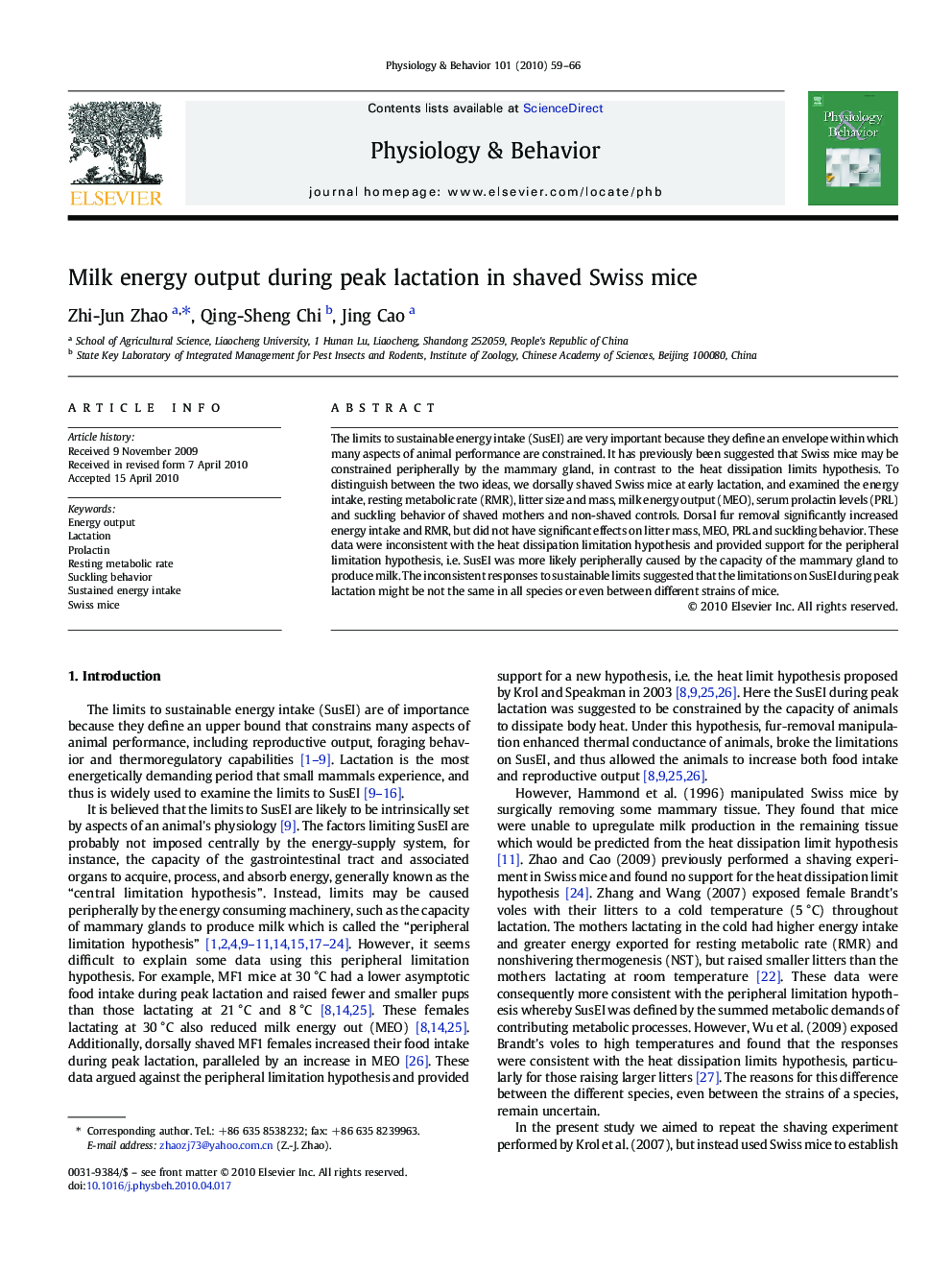| Article ID | Journal | Published Year | Pages | File Type |
|---|---|---|---|---|
| 2844696 | Physiology & Behavior | 2010 | 8 Pages |
The limits to sustainable energy intake (SusEI) are very important because they define an envelope within which many aspects of animal performance are constrained. It has previously been suggested that Swiss mice may be constrained peripherally by the mammary gland, in contrast to the heat dissipation limits hypothesis. To distinguish between the two ideas, we dorsally shaved Swiss mice at early lactation, and examined the energy intake, resting metabolic rate (RMR), litter size and mass, milk energy output (MEO), serum prolactin levels (PRL) and suckling behavior of shaved mothers and non-shaved controls. Dorsal fur removal significantly increased energy intake and RMR, but did not have significant effects on litter mass, MEO, PRL and suckling behavior. These data were inconsistent with the heat dissipation limitation hypothesis and provided support for the peripheral limitation hypothesis, i.e. SusEI was more likely peripherally caused by the capacity of the mammary gland to produce milk. The inconsistent responses to sustainable limits suggested that the limitations on SusEI during peak lactation might be not the same in all species or even between different strains of mice.
